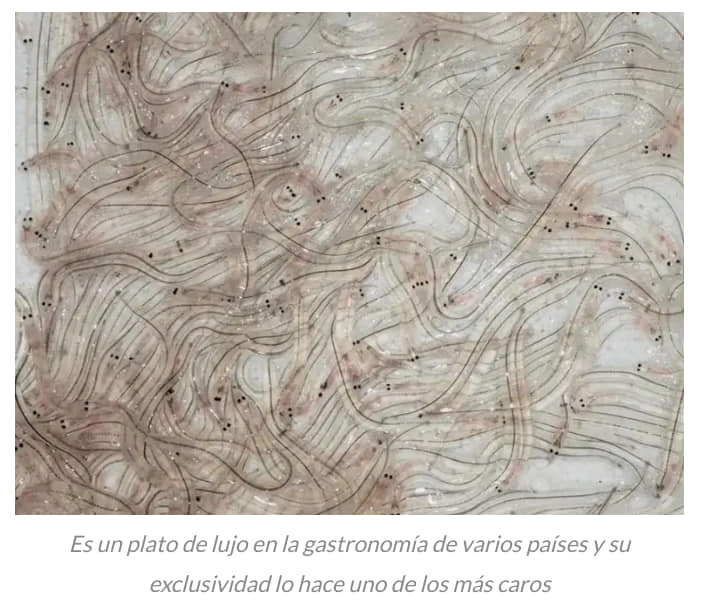
Angula, el manjar que Cuba exporta y que los cubanos nunca han visto en sus mesas. Si a un cubano usted le habla de angulas puede que abra los ojos como asombrado y las manos en señal de esta botao. Sin embargo, el Gobierno cubano tiene un verdadero negocio montado alrededor de este este exquisito manjar, pues brigadas al oriente de la isla se encargan de pescarlas y luego son vendidas a clientes asiáticos por más de 1000 dólares el kilogramo. La ciudad de Baracoa, en la provincia de Guatánamo, es uno de los paraísos cubanos de la angula, el alevín de las anguilas. Los pescadores que trabajan en la captura en los ríos guantanameros tienen un pago bastante elevado comparado con la media del… More
If you talk to a Cuban about angles, you may open your eyes like awe and your hands on the signal of this boot. However, the Cuban Government has a real deal mounted around this exquisite delicacy, as brigades east of the island are responsible for fishing and then sold to Asian customers for more than $ 1000 per kilogram. The city of Baracoa, in the province of Guat ánnamo, is one of the Cuban paradises of the angle, the fry of the eels. Fishermen who work on catching the glove rivers have a fairly high payment compared to the country average as per kilogram they deliver from this tiny fish receive 600 Cuban pesos ($ 24) and a currency bonus from a little over 7 CUC (7 dollars). This translates to receiving approximately $ 31 per kilogram delivered. Your ton can be paid between three and five million dollars, according to internet data.
The angle is highly prized in the luxury food market for its texture and exquisite flavor, but its price makes it a food that is within reach of few pockets in the world. Those caught in Baracoa have the particularity that they fish at the mouths of rivers and market only those that reach a size of five to six centimeters in length and about four millimetres wide, both measures considered the most representative size to sell at the best price on the market. Right at the place that binds the fresh waters of the river and salt of the sea find the angle, the result of the spawning of its progenitor, the eel, after embarking on this long journey to the Sargazos Sea, in the Bermuda Triangle, where arrive to spawn and then die. Start life again through these fish that give continuity to their species. They feed on plankton and it is the only glevin allowed by fishing laws
At the moment only 16 fishermen are working on this task, who managed to catch over 1000 kg last year, when they were only planning about 500. Each of the workers managed to capture an average of 65 kilograms of angles last year, meaning their wages reached nearly $ 2000 This number might seem low, but compared to the country’s average salary, which is around $ 30 per month, then it is proven to be far above the average. To capture they use a fishing art invented by themselves, called ‘militian’. This one is made with a thin nylon mesh that forms a long cone or bag that acts like a raft in which angles are caught alive. It is a luxury dish in the gastronomy of several countries and its exclusivity makes it one of the most expensive These glevines are then deposited in small nurseries, where they are selected to choose those who meet the characteristics for their export. After the selection process, the angles are preserved and packed alive, which are then sent to the province of Holguin, in nylon bags with water and oxygen, protected in polys foam boxes for export mainly to Asian countries. Experts consulted by our wording explained that although all angles are incredibly expensive and can reach prices of up to $ 5000 per kilo. www.cubacute.com ·